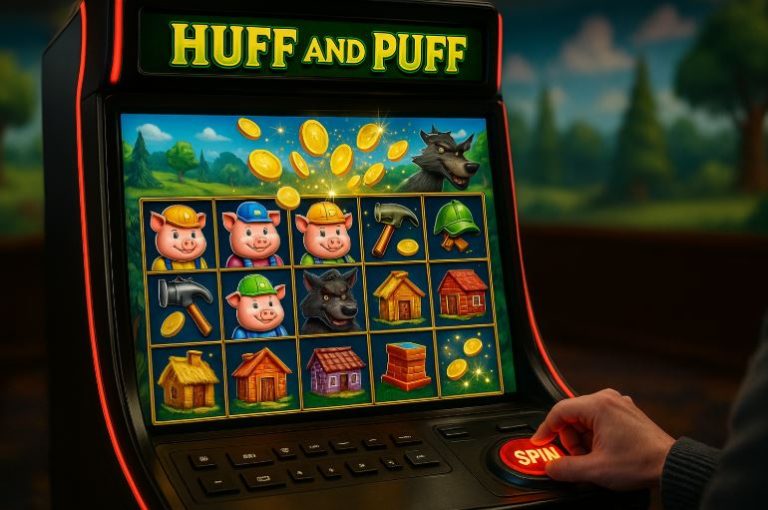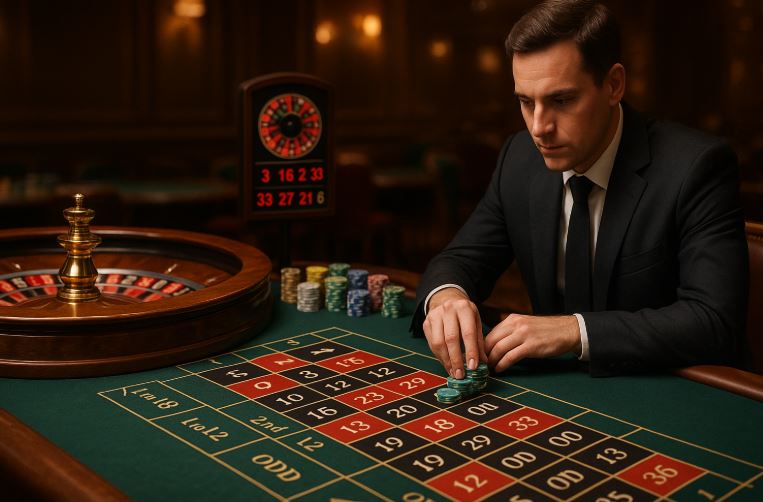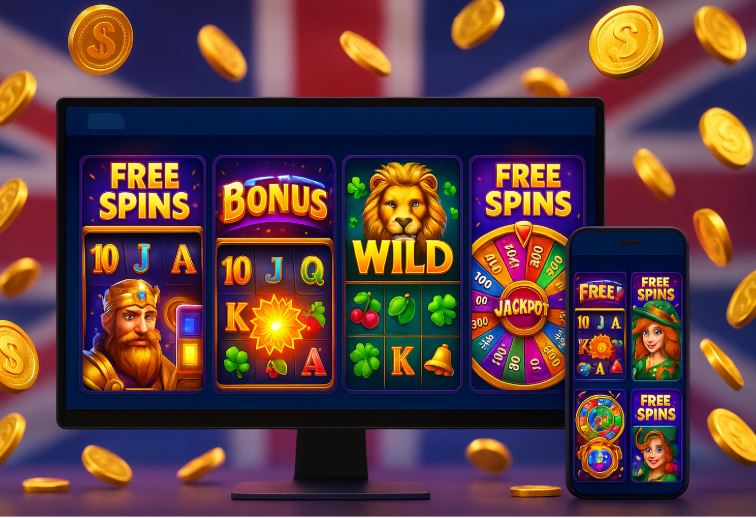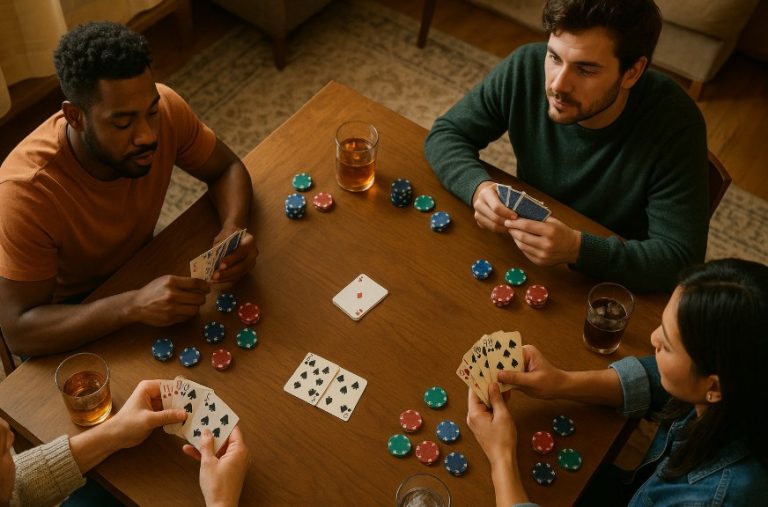Mexican Train Dominoes | Rules, Setup, and Strategy
Growing up, dominoes were always a part of game nights, but discovering Mexican Train Dominoes truly changed the experience. It’s more than just placing tiles; it’s a game of strategy, timing, and friendly rivalry that brings everyone together.
Whether you’re playing with family or friends, the rules are easy to learn, and the gameplay is endlessly engaging.
This guide covers everything you need to know, from setup and rules to strategy and variations, so you can play like a pro.
What is Mexican Train Dominoes?

Mexican Train Dominoes is a captivating and widely-loved tile game that brings together strategy, chance, and social interaction in a unique way.
Originating from traditional domino games, it evolved into a more modern and structured format that appeals to both casual and competitive players. Though the game doesn’t have direct ties to Mexico, its name is derived from the distinct “Mexican Train” element that distinguishes it from other domino variations.
The game has steadily grown in popularity across homes, clubs, and community groups in the UK and beyond. One of its strongest appeals lies in the simplicity of learning the rules, combined with the depth of strategic options available during play.
Unlike traditional dominoes, each player in Mexican Train works on their own chain of tiles while also having the opportunity to play on a communal “Mexican Train”. This adds a fascinating dynamic where players must weigh their own progress against potential help or hindrance to opponents.
The history of the game can be traced back to adaptations of Double Twelve domino sets that encouraged multiple players to engage more interactively. With the use of special accessories such as train markers and a central hub, the game has developed a distinct identity.
Today, it is considered one of the best family-friendly tile games that accommodates all ages and skill levels. Whether played casually or competitively, Mexican Train Dominoes offers hours of fun, suspense, and engaging gameplay.
What Equipment is Needed to Play Mexican Train Dominoes?
Before diving into a game of Mexican Train Dominoes, it’s essential to gather the right equipment. The primary requirement is a set of dominoes, typically the Double-12 set, which contains 91 tiles. Some variations use Double-9 or Double-15 sets depending on the number of players and desired game duration.
Essential Components
- Domino Set: A standard Double-12 domino set is most commonly used.
- Train Markers: Small tokens or objects that indicate an open train.
- Central Hub: A starter piece that includes the engine (usually the double-12 tile) and provides slots for each player’s train.
- Score Pads or Paper: For recording points after each round.
Optional Accessories
- Domino Trays: Useful for keeping tiles organised and concealed from other players.
- Carrying Case: Helps store all items in one place and is especially helpful for travel or game nights outside the home.
Each player typically begins with a set number of tiles drawn randomly. The number depends on the number of participants, ranging from 15 tiles for 2-4 players to fewer tiles for larger groups.
The central engine tile (often the double-12) is placed in the centre hub, from which all player trains and the Mexican Train will branch out.
Ensuring all necessary components are in place before play begins is crucial for a smooth and enjoyable experience. Investing in a high-quality domino set with clear, durable tiles can make a significant difference, especially when playing regularly.
How Many Players Can Join a Game of Mexican Train?

One of the most appealing aspects of Mexican Train Dominoes is its flexibility when it comes to player count. Whether hosting a small family game night or a larger social gathering, the game can easily accommodate a wide range of participants.
Ideal Player Range
The game is designed for 2 to 8 players, but with some variations and additional dominoes, more players can be included.
The Double-12 set is typically suited for up to 8 players. If a larger group is involved, a Double-15 set with 136 tiles may be used to ensure each player receives enough tiles at the beginning.
Player Setup and Distribution
- 2 to 4 Players: Each draws 15 tiles
- 5 to 6 Players: Each draws 12 tiles
- 7 to 8 Players: Each draws 10 tiles
It’s important that all players have equal opportunities, which is ensured by fair distribution of tiles and adherence to starting rules. Each participant will build a personal train from the central engine while also having the chance to place tiles on the communal Mexican Train when permitted.
The more players involved, the more dynamic and unpredictable the game becomes. With added participants, decision-making, blocking strategies, and train openings take on greater complexity and depth. It’s also a great way to encourage social engagement and group participation.
What is the Objective of Mexican Train Dominoes?
The core objective of Mexican Train Dominoes is straightforward: to be the first to play all your tiles and achieve the lowest possible score across multiple rounds.
Players must strategically build their train while simultaneously navigating opportunities to play on others’ trains or the communal Mexican Train.
Round and Game Structure
The game is played over multiple rounds, each beginning with a different double tile, starting from double-12 and descending to double-0. At the start of each round, the matching double is placed in the centre as the engine, and players draw tiles based on the total number of participants.
At the end of each round, players total the pips (dots) remaining on their dominoes. These points are added to their overall score. The player with the lowest cumulative score after all rounds is declared the winner.
Strategic Objectives
- Play higher-value tiles early to minimise points left in hand
- Block opponents by playing doubles or occupying opportunities
- Use the Mexican Train when no other moves are available
The mix of offence (playing out tiles) and defence (blocking others or managing doubles) adds depth to an otherwise simple scoring game.
Success in Mexican Train Dominoes often comes down to balancing aggression with patience and knowing when to disrupt your opponents’ trains while progressing your own.
How to Play Mexican Train Dominoes? – Step by Step

Learning how to play Mexican Train Dominoes is essential for new players. The game is easy to pick up but rewards strategic planning and thoughtful play.
Step-by-Step Instructions
Step 1: Setup
- Place the double-12 tile (or the appropriate double for the round) in the centre hub
- Shuffle all dominoes face down and draw tiles as per the player count
- Each player arranges their tiles but keeps them hidden from others
Step 2: Start the Round
- The player with the highest double begins by placing it in the centre
- If no one has the starting double, players draw from the boneyard until it’s found
Step 3: Begin Building Trains
- Players take turns clockwise
- Each player starts building a personal train from the central double
- On their turn, a player may play a tile that matches the last number on their train
Step 4: The Mexican Train
- Any player may start the communal Mexican Train on their turn
- Once started, anyone can play on it during their turn
- If a player cannot play on their own train, they must mark it open using a train marker
Step 5: Playing Doubles
- When a double is played, it must be “satisfied” by playing another tile on it
- If the player can’t satisfy it, others must try on their next turns
Step 6: Ending a Round
- A round ends when one player has no tiles left
- Remaining players total the value of unplayed tiles and add it to their score
Learning these rules and following a step-by-step method ensures players have a clear understanding of game flow and dynamics, making for an enjoyable experience for all.
What are the Rules for Starting the Mexican Train?
The Mexican Train adds a unique twist to the game and follows its own set of guidelines. This public train can be used by any player and often becomes a lifeline when no personal moves are available.
When to Start the Mexican Train?
The Mexican Train can be started by any player on their turn, provided the tile they wish to play matches the centre double. Once started, it becomes a shared path where all players can add tiles during their turns.
Key Rules
- The first tile on the Mexican Train must match the centre engine
- Players can only start the Mexican Train during their turn
- Once started, the train remains open for the rest of the round
Role in Strategy
The Mexican Train allows flexibility but can also benefit opponents. Savvy players often weigh the risk of enabling others before adding to the communal train. When managed wisely, it becomes an essential part of successful gameplay.
What Happens When a Player Can’t Play a Tile?

Not every turn allows for a successful play. When a player cannot make a move from their hand, a clear protocol is followed to maintain fairness and continuity.
Drawing from the Boneyard
If a player can’t play on their own or on any open train:
- They draw one tile from the boneyard
- If the new tile is playable, they may play it immediately
- If not, they keep the tile and mark their personal train as open
Open Trains
An open train is one marked with a token, signifying that other players can place tiles on it during their turns. This rule prevents gameplay from stalling and increases interactive elements.
Resolving Doubles
If a double is played and not satisfied immediately, the next player must try to satisfy it. This continues until the double is resolved, at which point normal play resumes.
Managing these turns wisely, especially under pressure, can be a defining factor in the outcome of a round.
What Are the Scoring Rules in Mexican Train?
Scoring in Mexican Train Dominoes is simple yet impactful. After each round, players must total the number of pips on their remaining tiles.
Score Calculation
- Each player adds up the total dots (pips) on unplayed tiles
- These points are added to their cumulative score
Winning Criteria
At the end of all 13 rounds (Double-12 to Double-0), the player with the lowest total score is the winner. This encourages early play of high-value tiles and careful hand management throughout each round.
What Strategies Help Win at Mexican Train Dominoes?

Winning in Mexican Train isn’t just about luck. Strategic play enhances your chances of winning consistently.
Key Strategic Tips
- Play high-value tiles early to reduce scoring penalties
- Use the Mexican Train wisely and avoid helping others unless necessary
- Keep track of what tiles are already played
- Manage doubles carefully to avoid forced plays
- Don’t open your train unless absolutely needed
Playing Defensively
Good players don’t just focus on their own trains but also actively block others. Keeping your train private as long as possible and forcing others to draw or open their trains gives you an edge.
What Are the Variations of Mexican Train Dominoes?
Over time, many families and gaming circles have introduced unique twists to Mexican Train Dominoes.
Common Variants
- Fast Play Mode: Reduces the number of rounds or limits time per turn
- Double-15 Variant: Used for larger groups or longer games
- Joker Tiles: Special tiles act as wild cards in some versions
- Children’s Version: Simplified rules and scoring for younger players
These variations maintain the core mechanics while adding fresh ways to enjoy the game. They also allow groups to tailor play based on skill levels and preferences.
Conclusion
Mexican Train Dominoes remains one of the most entertaining, strategic, and community-driven games available today. Its appeal lies in its simplicity to learn and the subtle depth it offers as players develop their skills.
From small family gatherings to competitive clubs, the game continues to thrive across generations. Whether you’re a beginner or a seasoned pro, understanding the rules, strategy, and etiquette ensures a satisfying experience every time the tiles hit the table.
Frequently Asked Questions
What size domino set is best for Mexican Train Dominoes?
A Double-12 set is the standard choice, offering 91 tiles, suitable for up to 8 players.
Can Mexican Train be played with fewer than four players?
Yes, the game is flexible and enjoyable with as few as two players.
Is the Mexican Train mandatory to start in every game?
No, players may choose whether or not to start the Mexican Train during their turn.
What is a train marker used for?
It indicates an open train, signalling other players can place tiles on it.
How long does a typical game last?
A full game with all 13 rounds can take 1.5 to 2.5 hours, depending on the number of players.
Can tiles be played on more than one train in a turn?
No, each player may only play one tile on one train during their turn unless satisfying a double.
What happens if all players are blocked?
If no legal plays remain and the boneyard is empty, the round ends and scoring is calculated.
Disclaimer
This information is shared for educational purposes only. We do not endorse gambling. Please make informed choices and gamble responsibly if you choose to participate.







